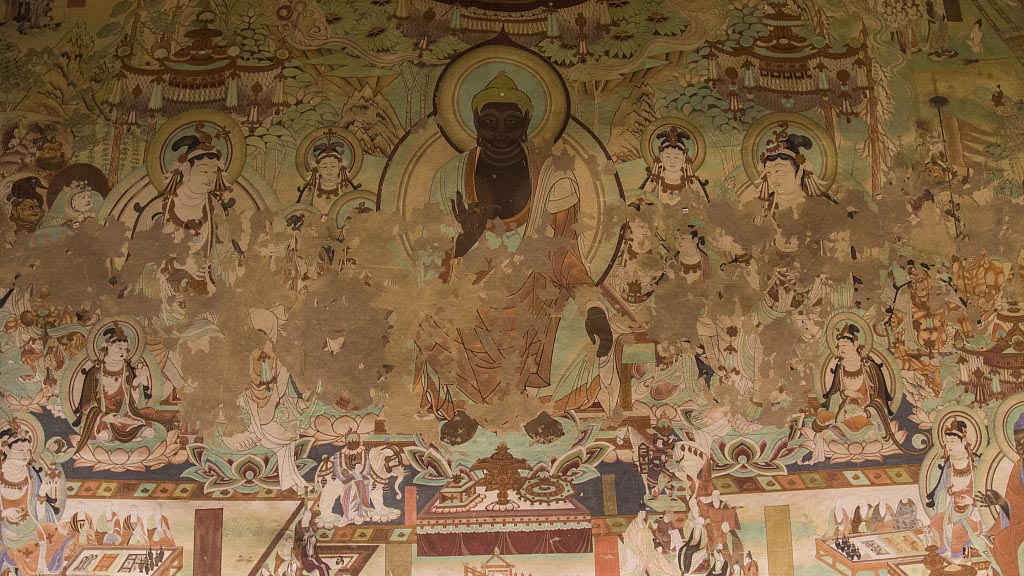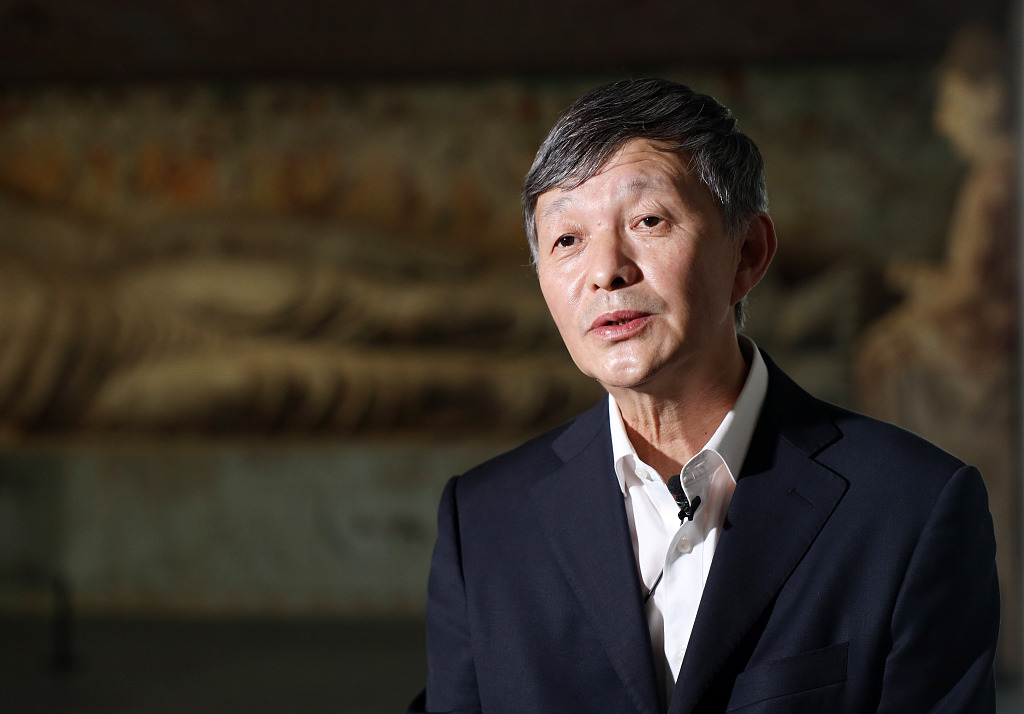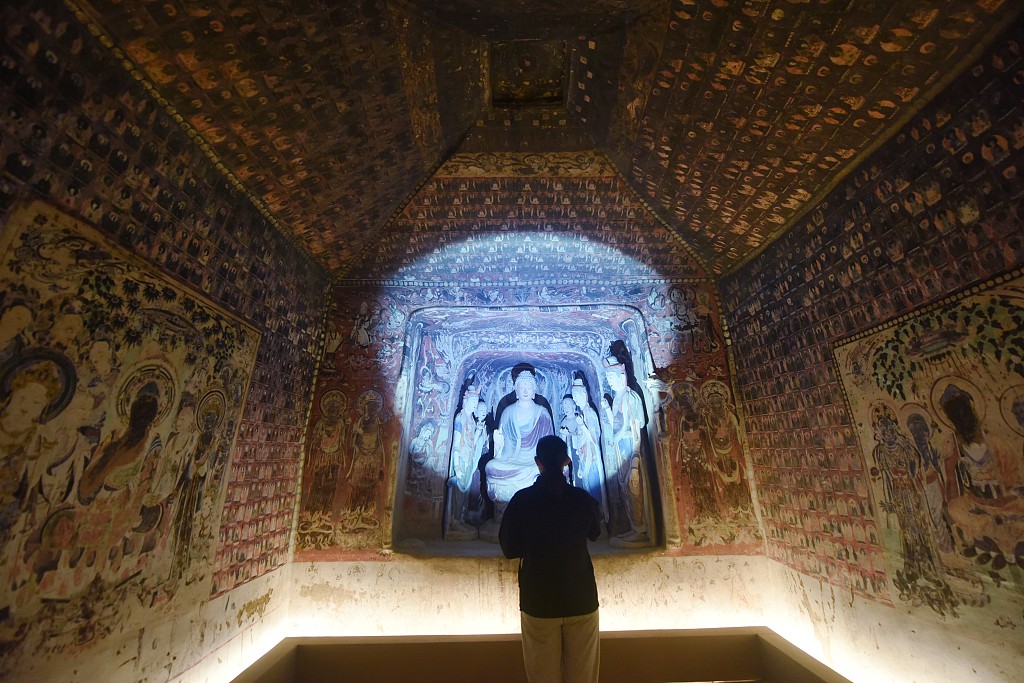03:32

Located in Dunhuang of China's Gansu Province, the Mogao Grottoes have unique cultural value. It is one of the most well-preserved world heritage sites, contains rich content and has a long history. Its precious but vulnerable murals are believed to be a significant depiction of interaction and integration between different cultures.
"Looking at the cave murals, you can see why they emerged in a certain era and how they relate to the historical background and society at that time," said Su Bomin, dean of the Dunhuang Academy, during his interview with CGTN at the 6th Silk Road (Dunhuang) International Cultural Expo, which took place from September 6 to 7.

A file photo of Su Bomin, dean of the Dunhuang Academy. /CFP
A file photo of Su Bomin, dean of the Dunhuang Academy. /CFP
As the research further developed, Su began to believe that the stories behind the murals would become more and more in-depth, layered and comprehensive.
In his view, even one single mural from the Mogao Grottoes could reflect the entire Dunhuang region and the development of society, trade, agriculture, military and other aspects of the Silk Road period. "Therefore, many more stories can be derived from these cultural relics," he added.
Su's view is a testament to the cultural significance of the Dunhuang-based murals and the need to preserve them. The application of digital technology is of great importance. The scientific and technological development of cultural relic protection in China has been on a fast track.
Thanks to this development, many more college graduates, research institutions and universities have joined the field of cultural relic protection.
The Dunhuang Academy is one of these research institutions. It is an institution that focuses on the use of technological innovations in the protection of grottoes, murals, historic buildings and in the digitization of cultural relics.
The original intention to use the technology in mural protection dates back to the early 1990s, when Fan Jinshi, a former dean of the academy, proposed that these precious murals should be recorded and permanently preserved using digital technology.
"How to preserve these timeless and beautiful murals has always been a mission for our institution," said Su Bomin.

A file photo taken in April 2022 shows a 3D replica of a Mogao cave mural on display in Hangzhou, east China's Zhejiang Province. /CFP
A file photo taken in April 2022 shows a 3D replica of a Mogao cave mural on display in Hangzhou, east China's Zhejiang Province. /CFP
Throughout his many years of research, Su has witnessed the continuous development of digital technology. Su noted that "storage, collection and image resolution are improving exponentially each year." "The image resolution is very high. If you zoom in, an image may be clearer than if viewed with the naked eye." "Because of this, we have amassed a gigantic digital database," added Su.
The "Digital Library Cave" is one of the outcomes of a mural protection collaboration between the Dunhuang Academy and China’s tech giant Tencent. Su believed the online cave would prompt more people, especially young people, to "discover more about these precious cultural relics through entertaining forms of learning."
For Su and his team, the launch of a range of digital and immersive exhibitions is part of a "digital" plan in the future. "Dunhuang is a treasure trove of content, so we can create many different types of short videos and programs related to the murals," said Su. "And sharing them on the internet can allow more people to gain a deeper and more holistic understanding of the Dunhuang murals."